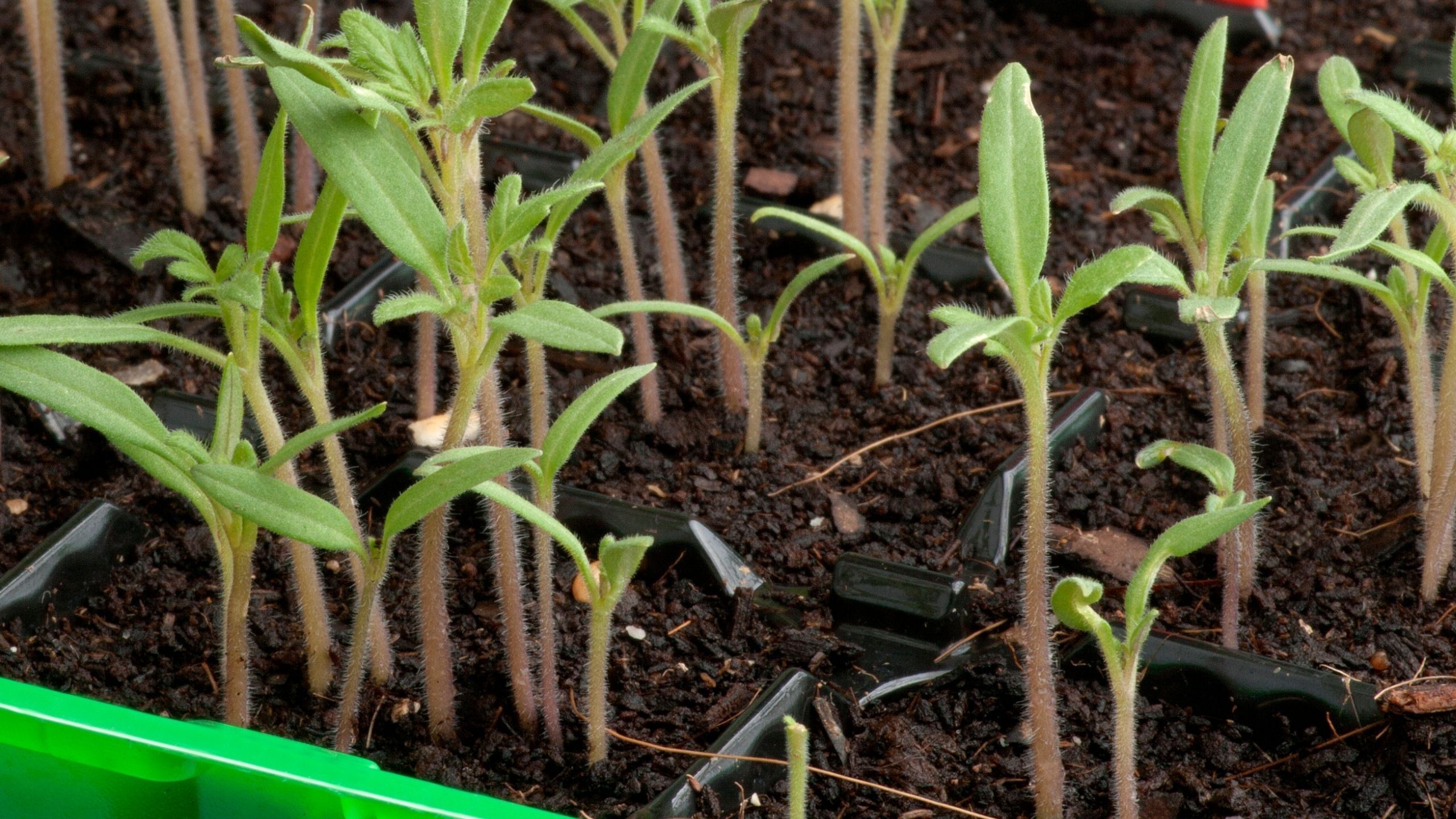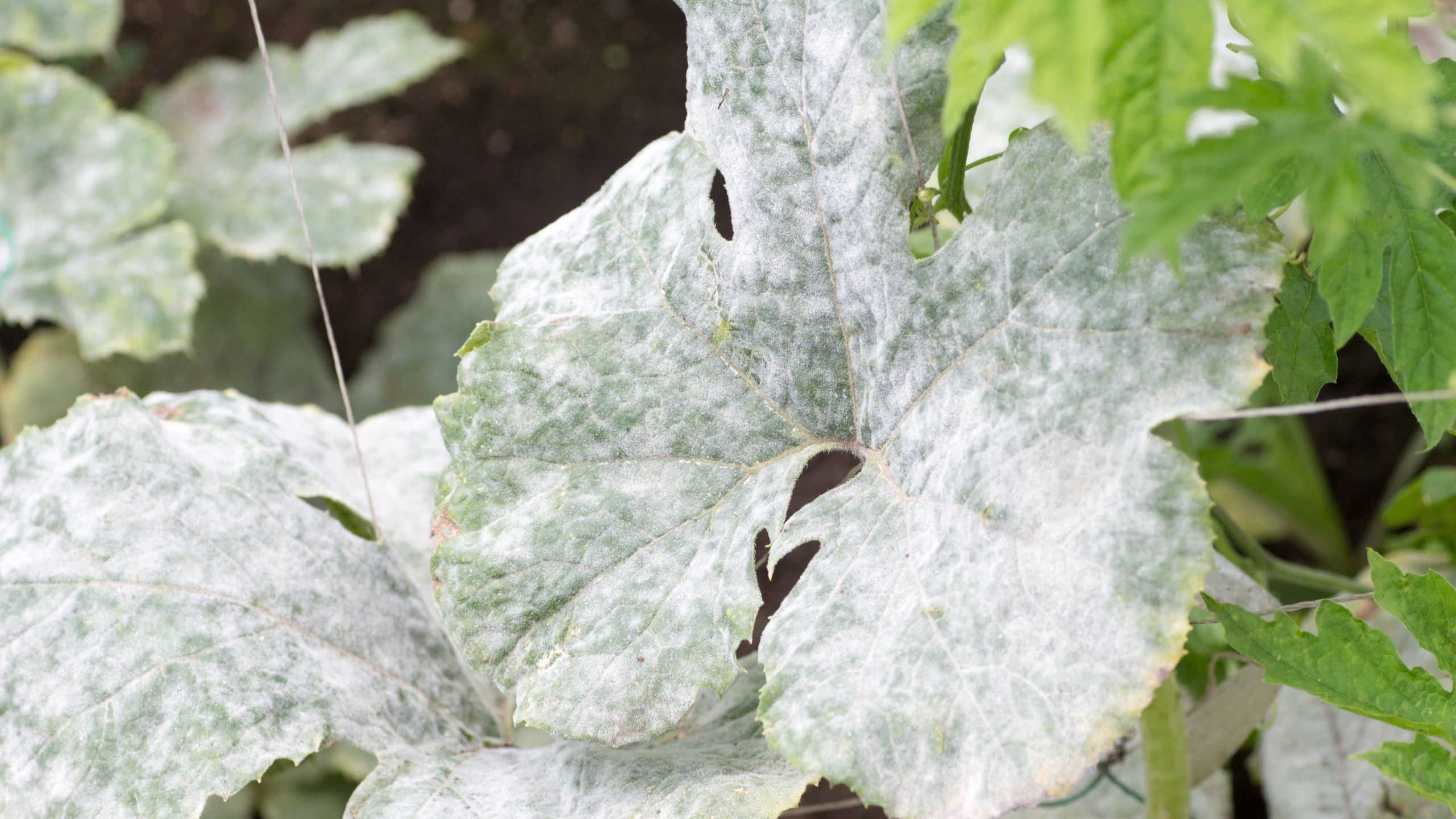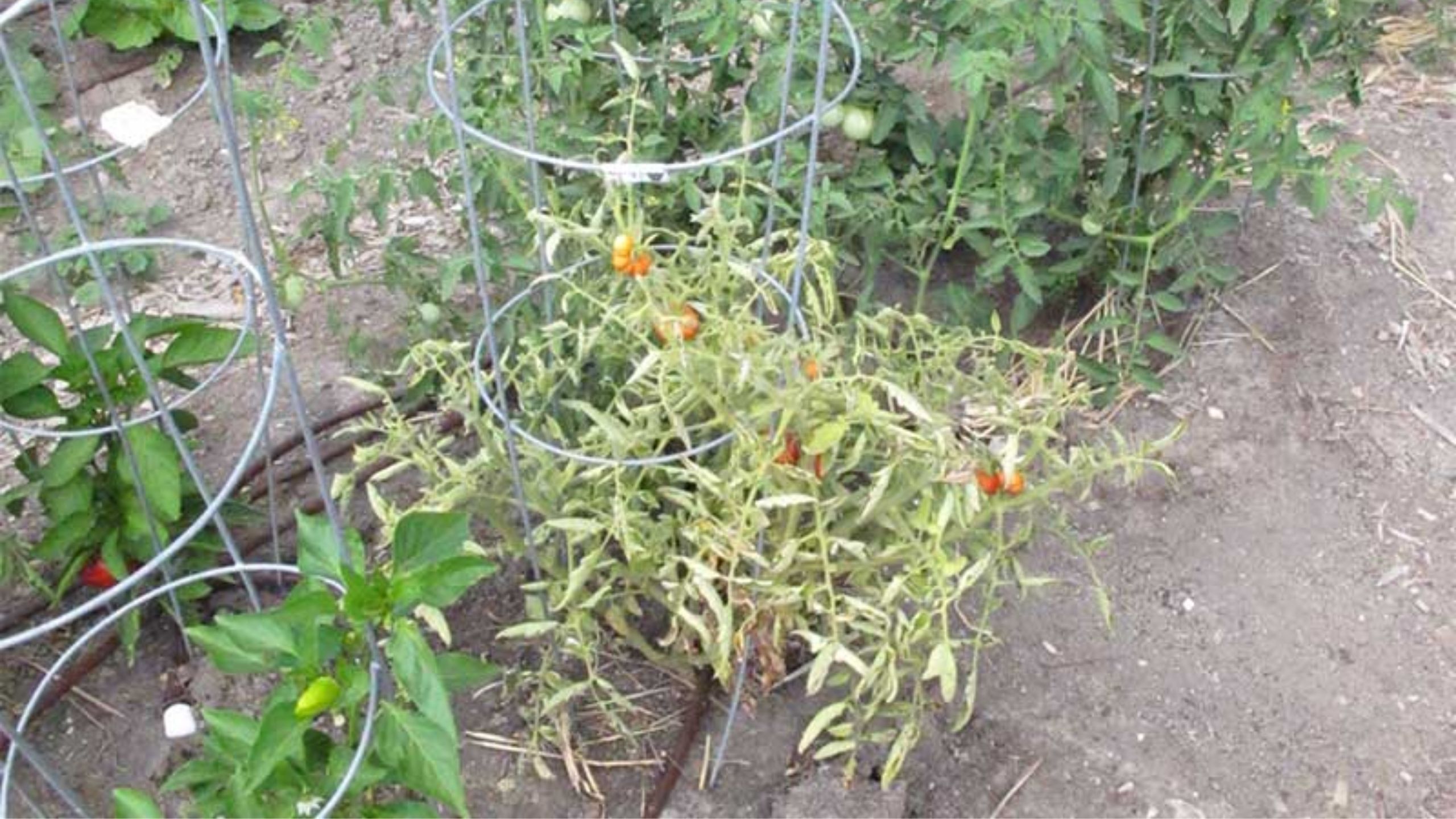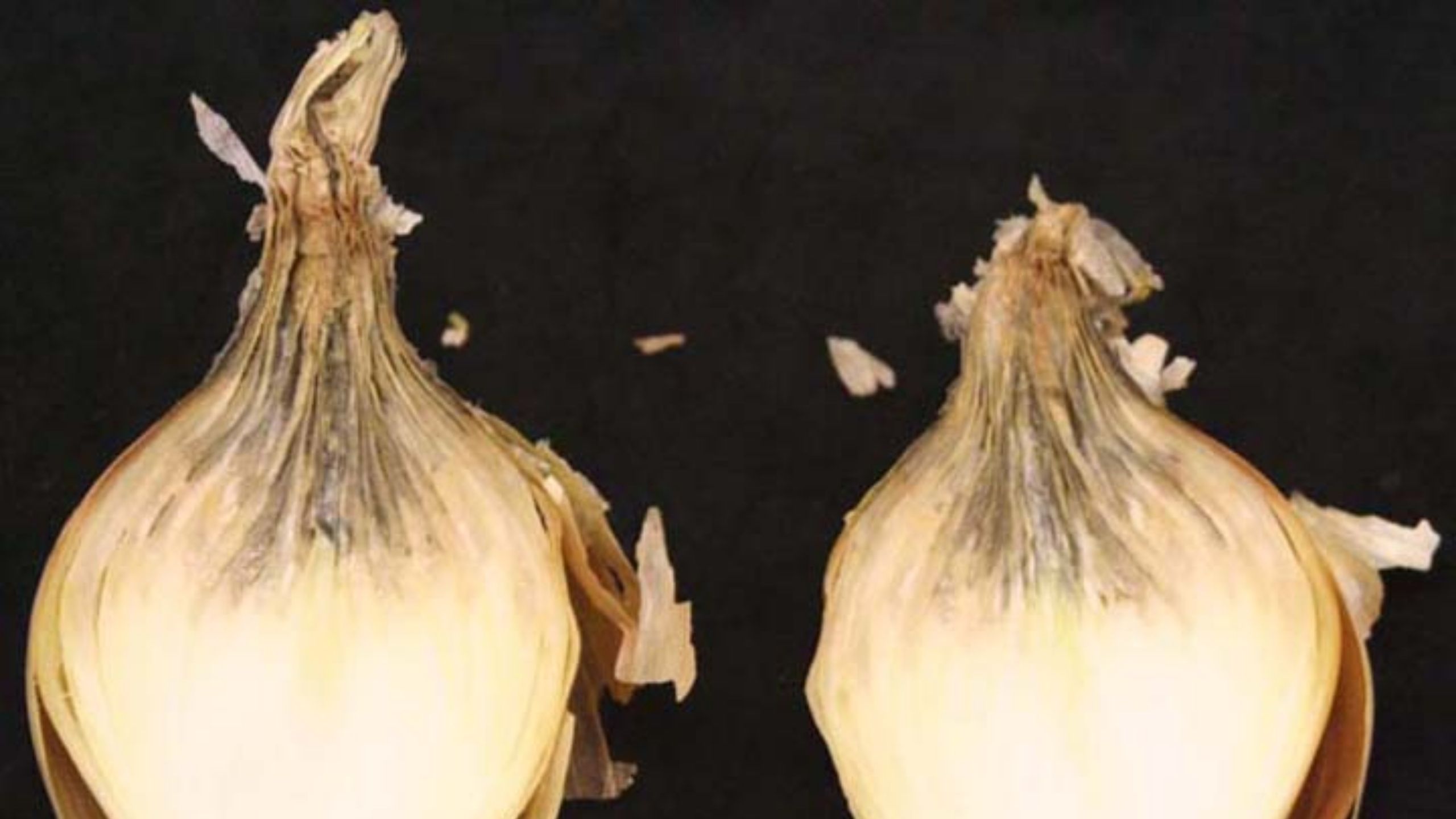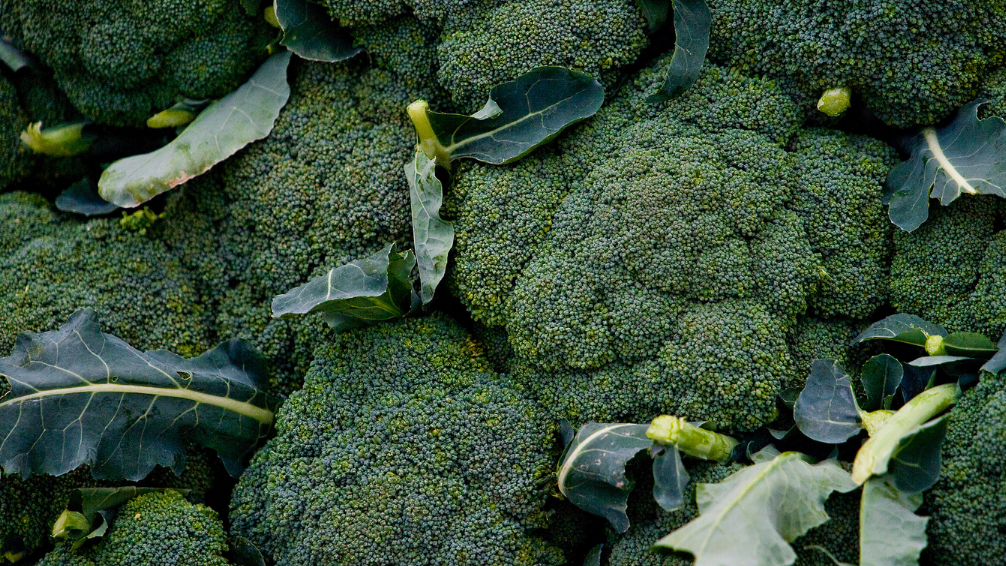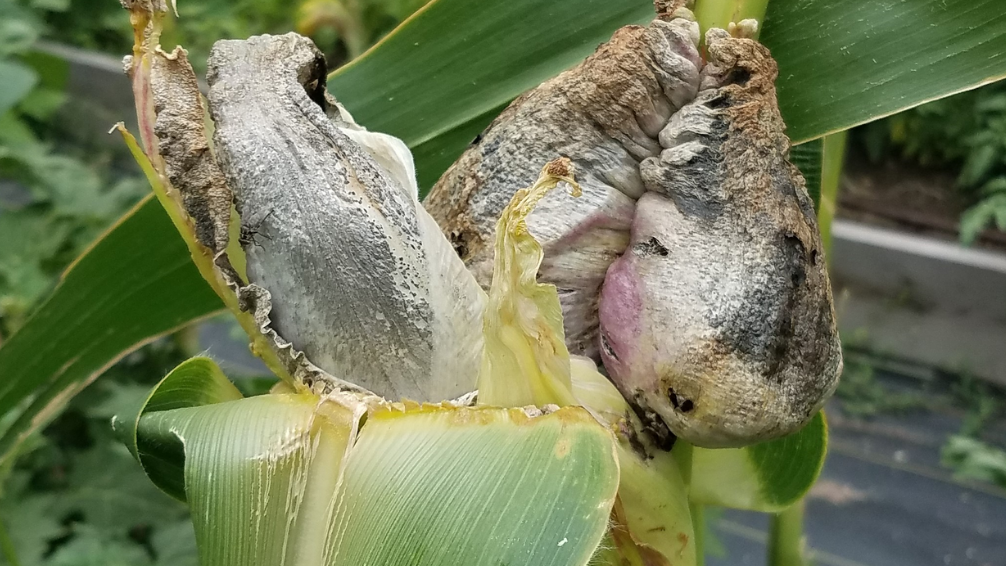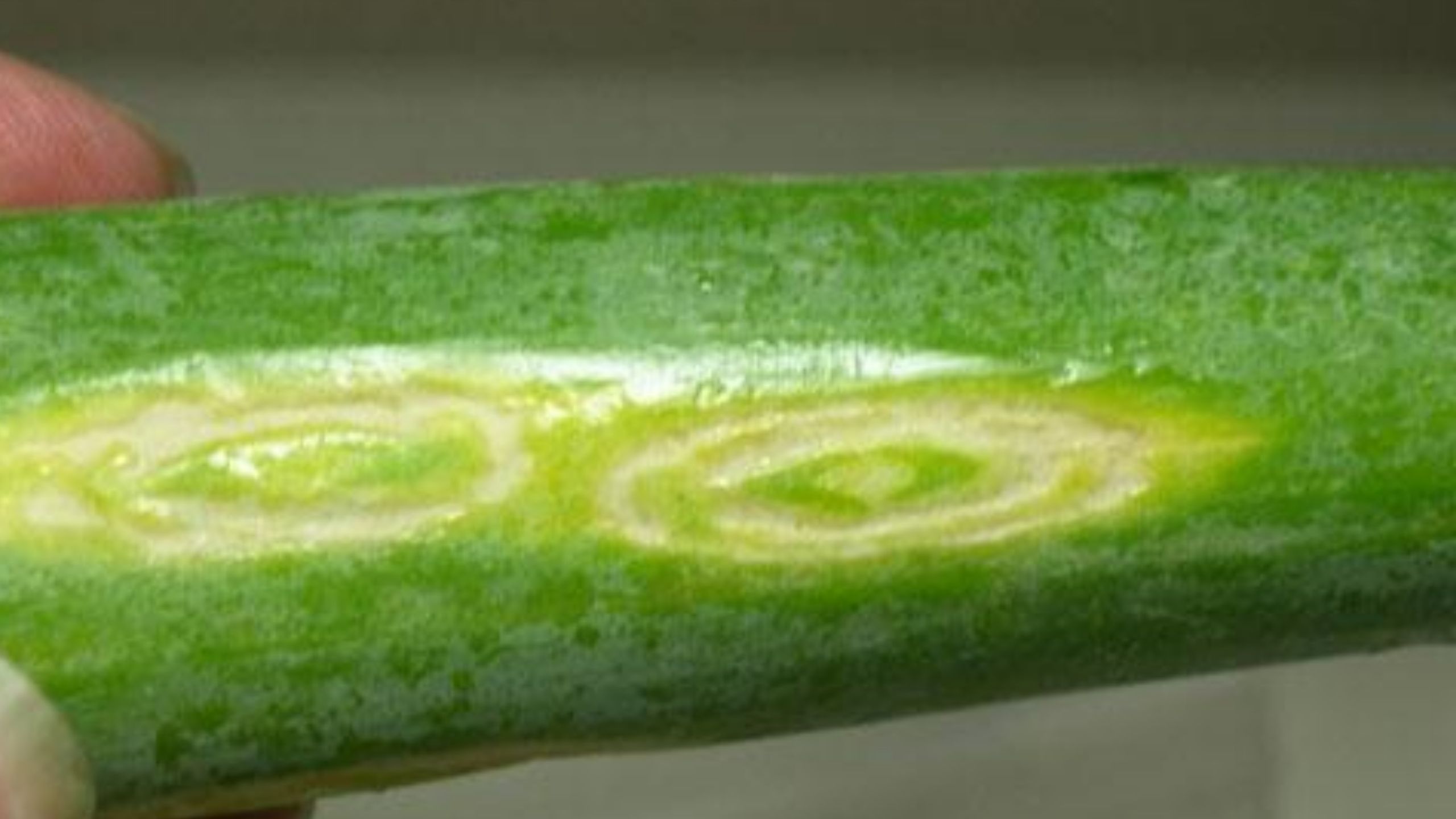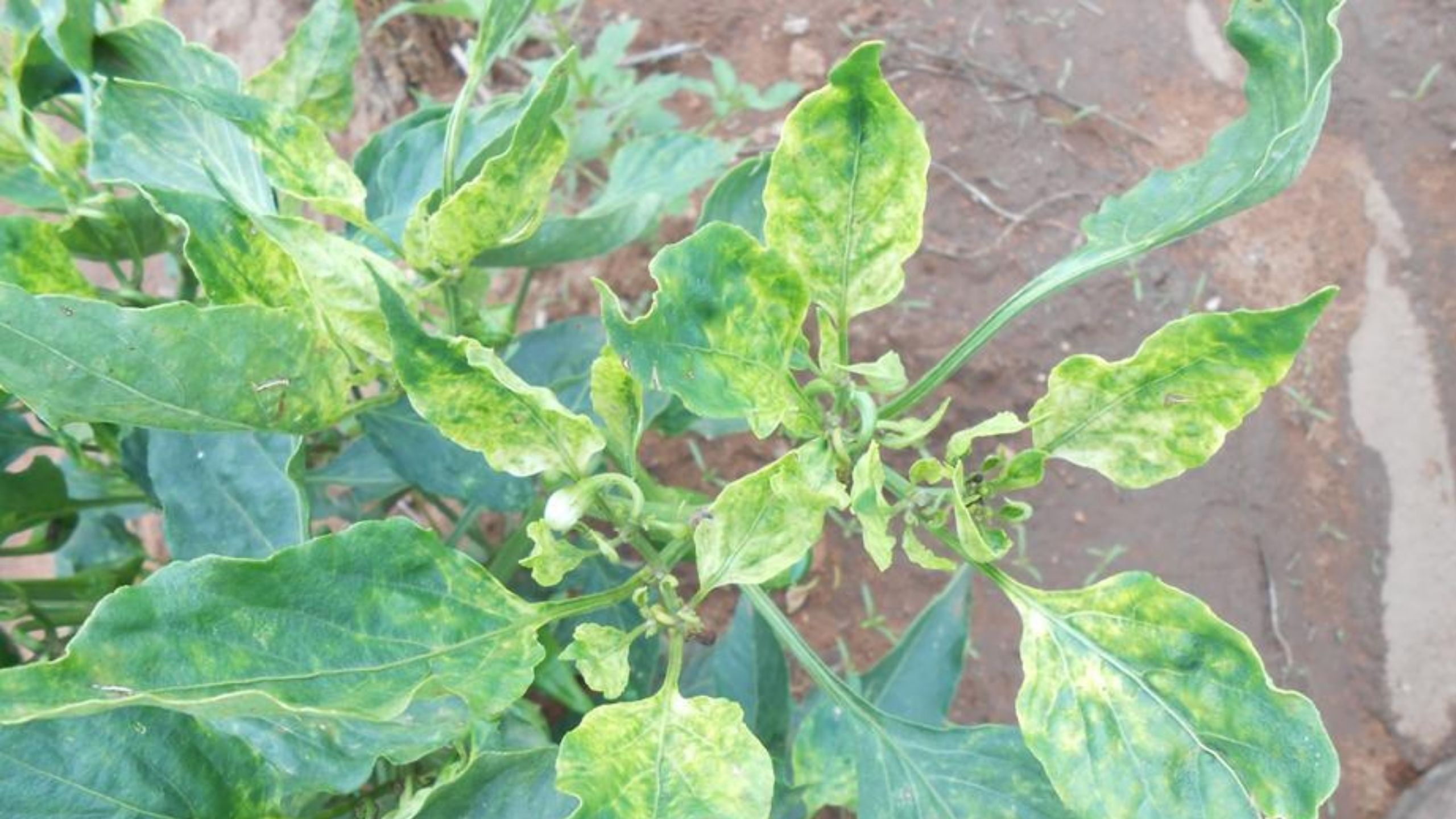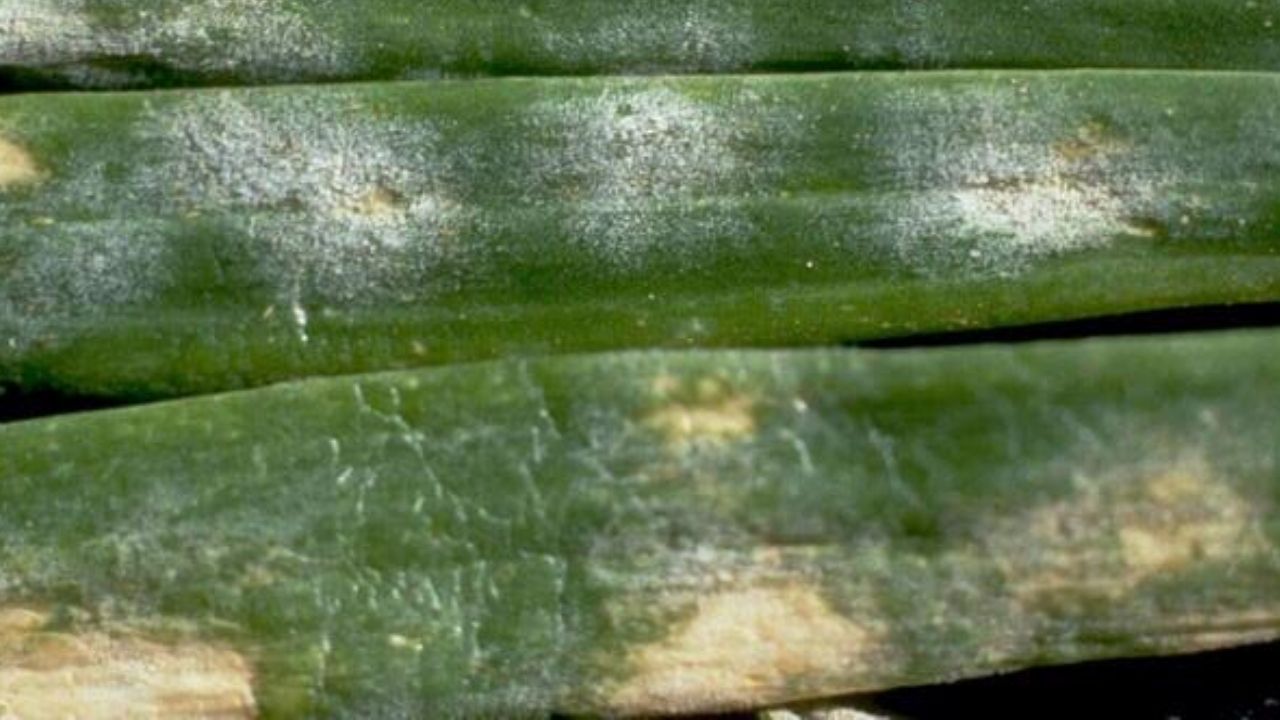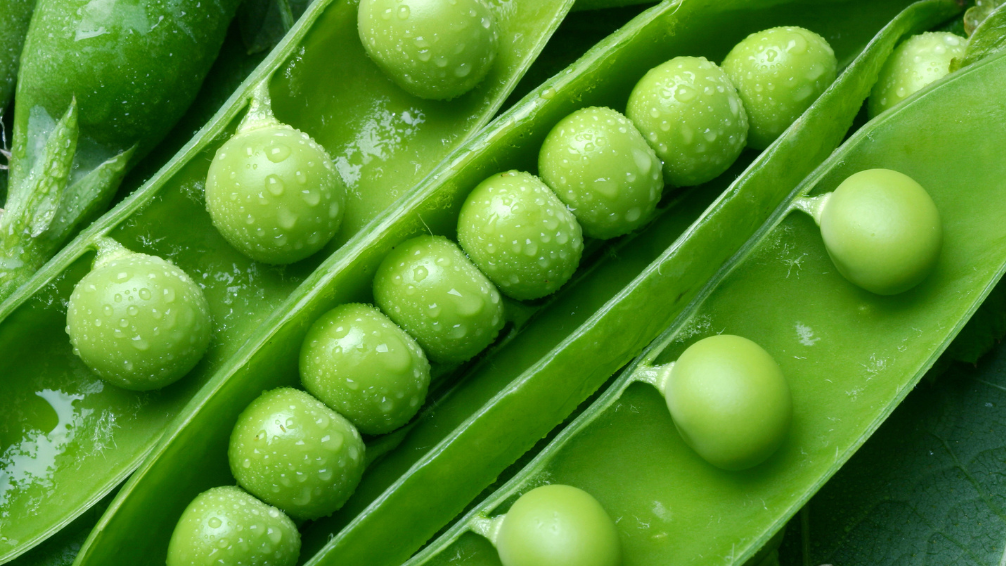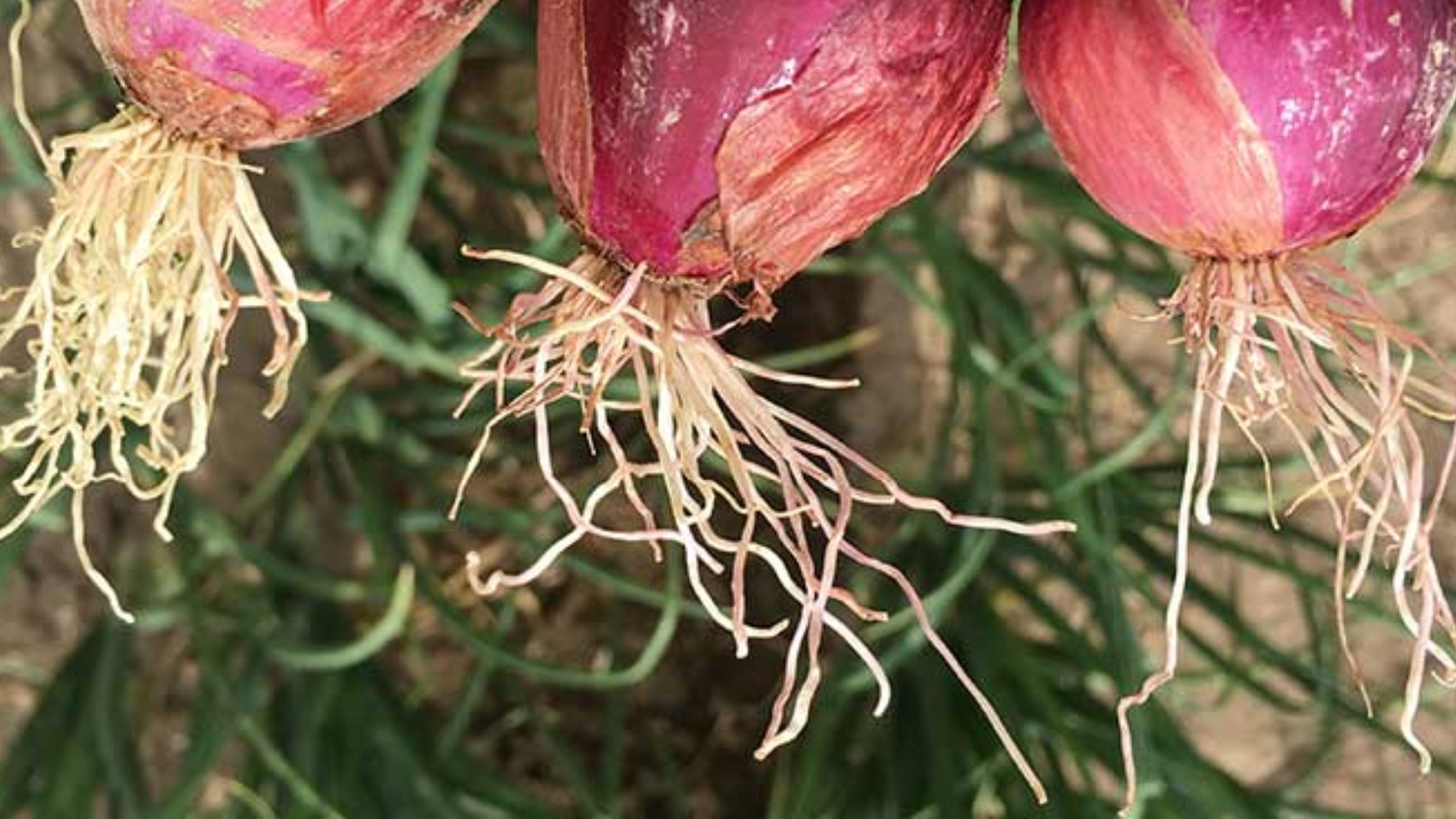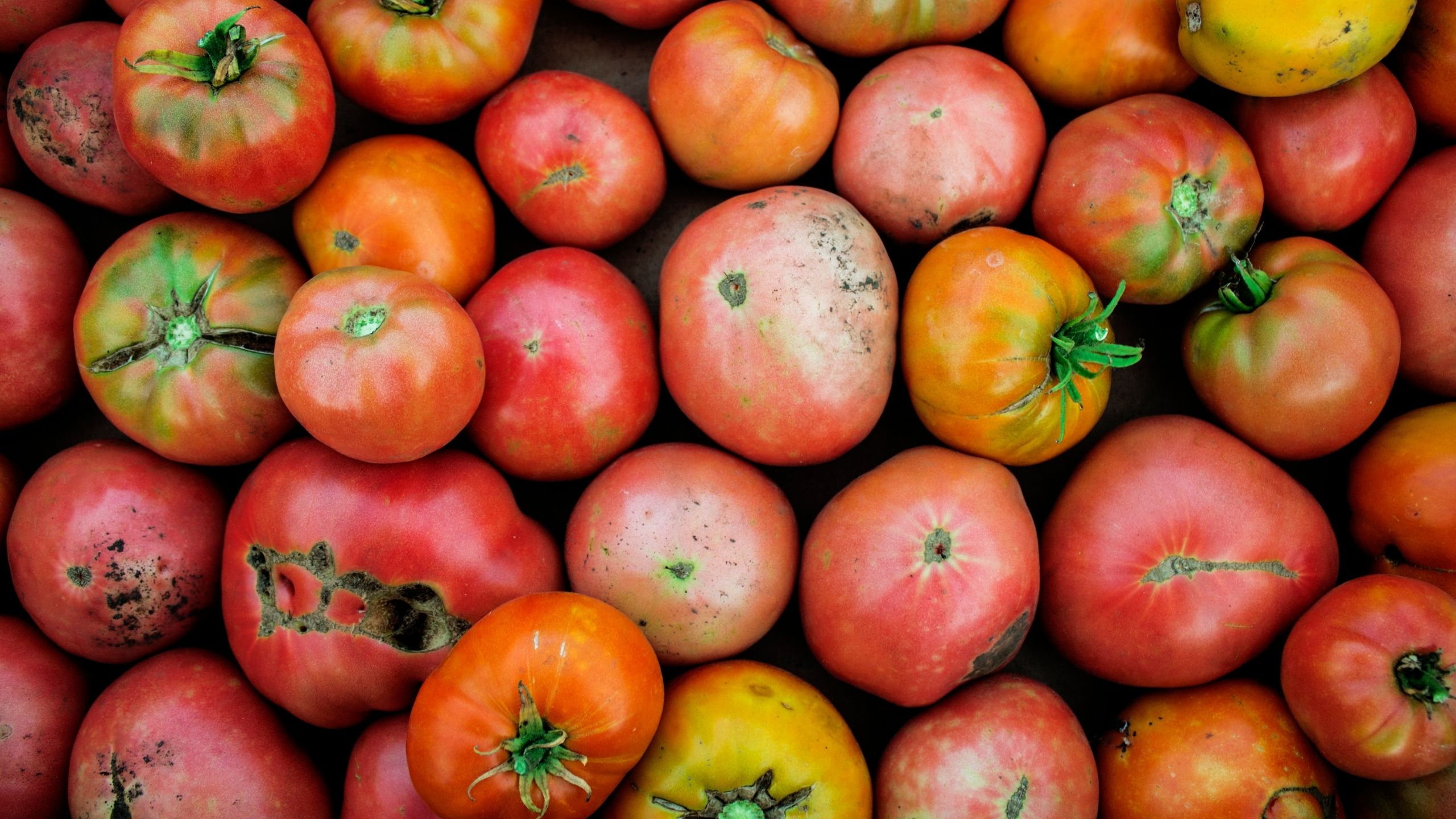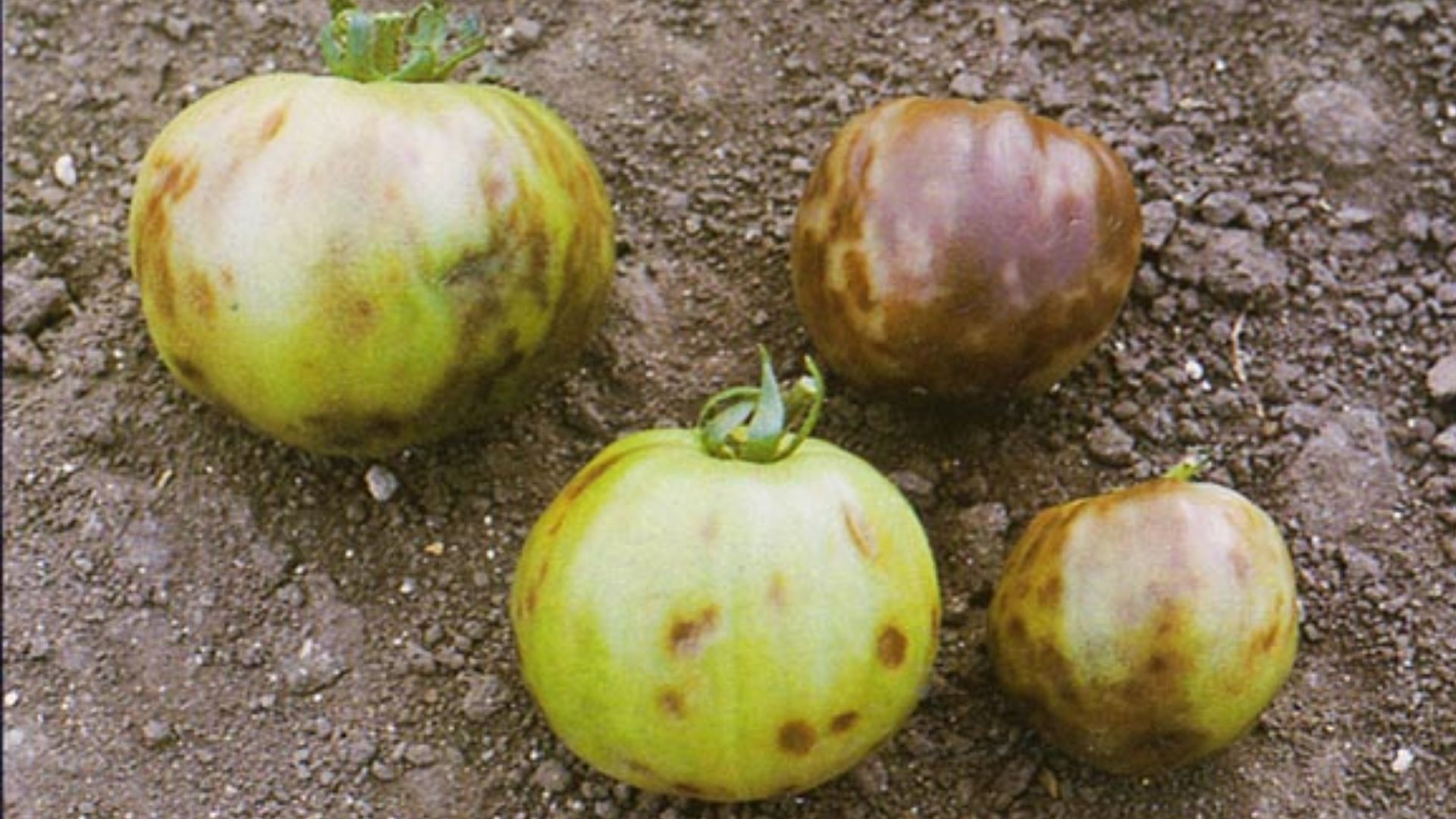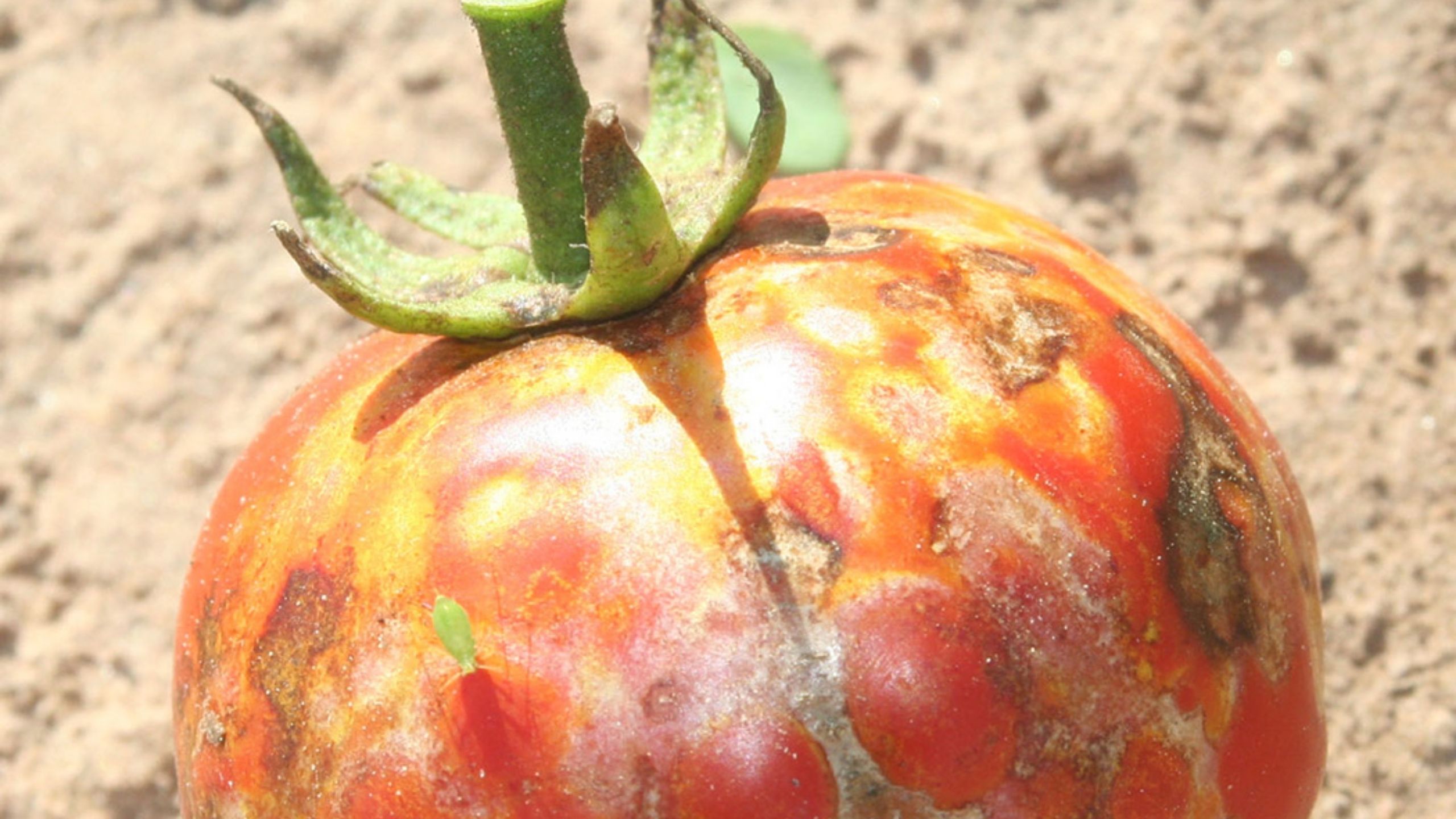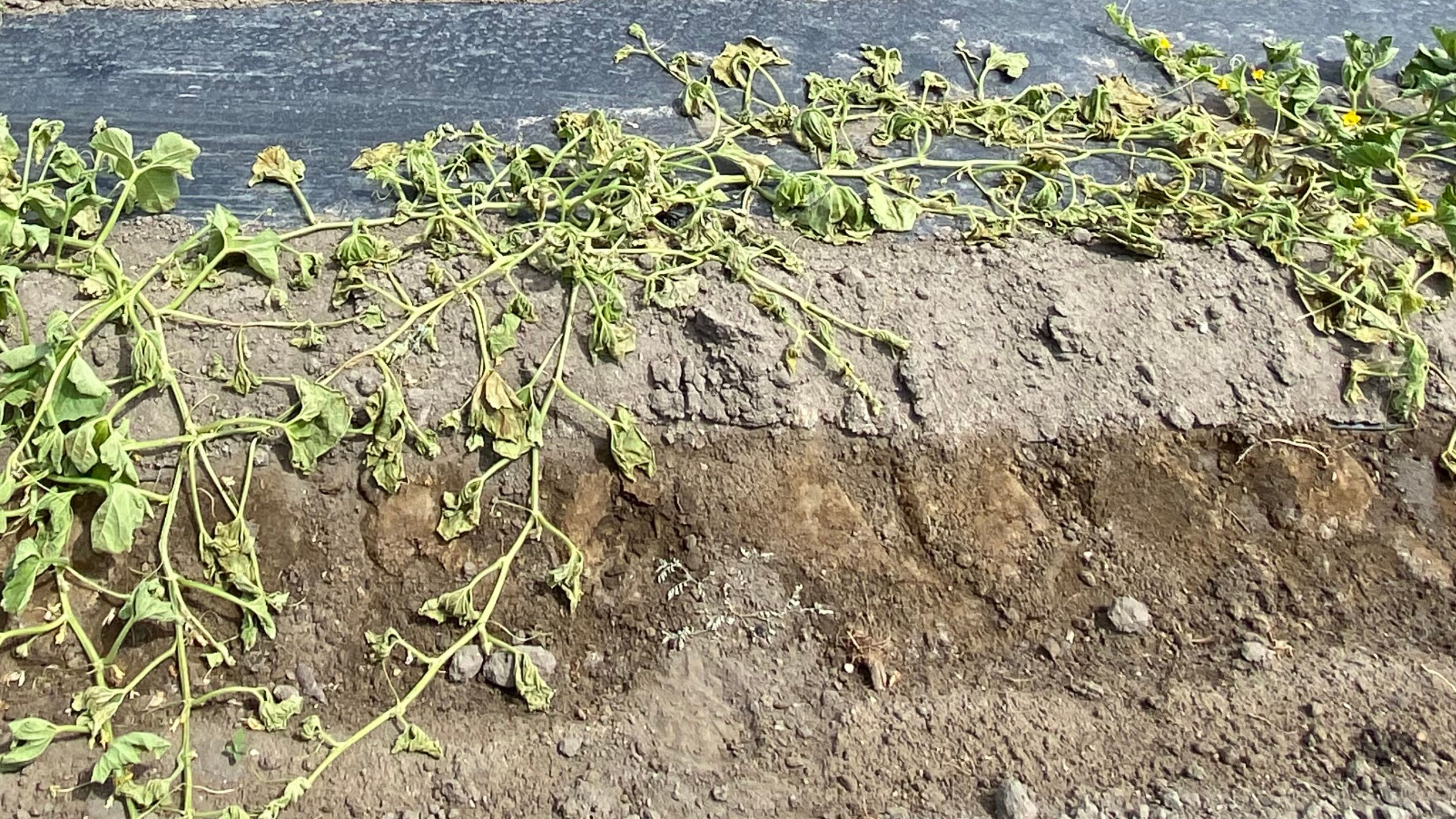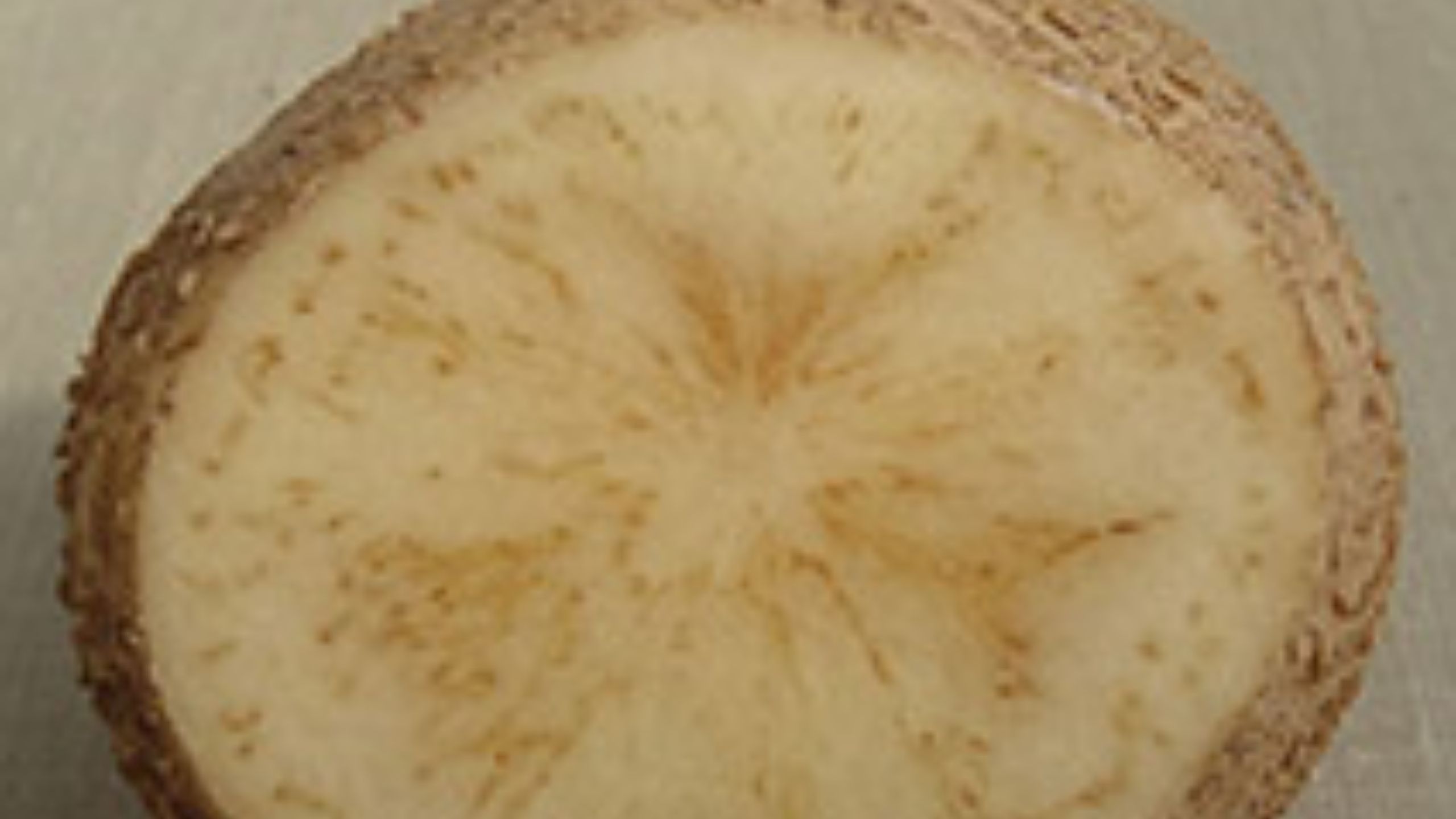Fusarium and Verticillium Wilts of Vegetables
February 2022
Nick Volesky, Vegetable IPM Associate • Marion Murray, Extension IPM Specialist • Claudia Nischwitz, Extension Plant Pathologist
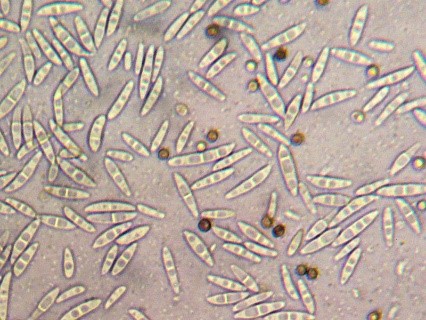
Fig. 1. Microscopic view of Fusarium spores. Image courtesy of Magnus Gammelgaard.
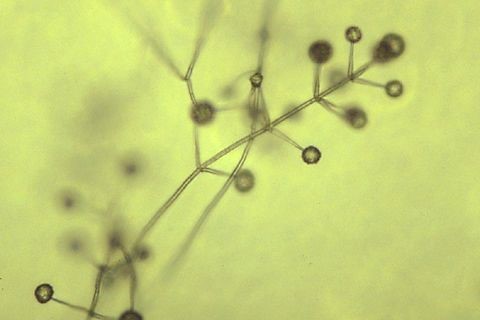
Fig. 2. Microscopic view of Verticillium sp. Image courtesy of Scott Enebak, University of Auburn.
Quick Facts
- Fusarium wilt and Verticillium wilt are both soilborne fungal diseases that affect many vegetable crops grown in Utah. Both cause similar symptoms in their hosts.
- Fusarium wilt is caused by Fusarium oxysporum, a pathogen that is classified into formae speciales (ff. spp.) based on strains that are adapted to specific hosts.
- Verticillium wilt is caused by Verticillium dahliae or V. albo-atrum, and both have been frequently diagnosed in Utah.
Fusarium wilt and Verticillium wilt are soilborne plant diseases that attack vascular tissue. They cause similar symptoms in their hosts and are difficult to manage as they can survive in the soil for many years. Once a plant is infected, there is no treatment or cure. Therefore, management should focus on preventive and cultural control practices.
Description and Hosts
Both pathogens have a wide host range of vegetable crops in Utah. Fusarium oxysporum (Fig. 1) is often classified as a strain called forma specialis (f. sp.), based on the hosts they infect (Table 1). Many formae speciales are further assigned into a race (1, 2, 3, etc.) based on resistance genes that the host cultivar may or may not have. Verticillium dahliae and V. albo-atrum (Fig. 2) both cause Verticillium wilt, and their hosts are listed in Table 2.
Table 1. Fusarium Wilt and Vegetable Hosts
| Pathogen | Host |
|---|---|
| Fusarium oxysporum f. sp. apii | Celery |
| Fusarium oxysporum f. sp. asparagi | Asparagus |
| Fusarium oxysporum f. sp. batatas | Sweet Potato |
| Fusarium oxysporum f. sp. betae | Beet |
| Fusarium oxysporum f. sp. cepae | Garlic, Onion |
| Fusarium oxysporum f. sp. ciceris | Chickpea |
| Fusarium oxysporum f. sp. conglutinans | Broccoli, Brussels Sprouts, Cabbage, Cauliflower, Kale |
| Fusarium oxysporum f. sp. cucumerinum | Cucumber |
| Fusarium oxysporum f. sp. cucurbitae | Squash (Summer and Winter) |
| Fusarium oxysporum f. sp. lactucae | Lettuce |
| Fusarium oxysporum f. sp. lycopersici | Eggplant, Pepper, Tomato |
| Fusarium oxysporum f. sp. melonis | Cantaloupe |
| Fusarium oxysporum f. sp. niveum | Watermelon |
| Fusarium oxysporum f. sp. phaseoli | Bean |
| Fusarium oxysporum f. sp. pisi | Pea |
| Fusarium oxysporum f. sp. spinaciae | Spinach |
| Fusarium oxysporum f. sp. tracheiphilum | Pea (black-eyed) |
Table 2. Verticillium and Vegetable Hosts
| Pathogen | Host |
|---|---|
| Verticillium dahliae | Artichoke, Broccoli, Brussels Sprouts, Cabbage, Cauliflower, Cantaloupe, Cucumber, Kale, Lettuce, Squash, Watermelon |
| Verticillium albo-atrum | Beet, Brussels Sprouts, Cabbage, Cauliflower, Chickpea, Kale, Potato, Squash, Watermelon |
Symptoms
The primary symptom of infection by Fusarium oxysporum is wilting. Wilting does not occur until several weeks after infection; therefore, young plants can unknowingly be infected. Sometimes, wilting only occurs on one side or portion of the host. Initially, plants may recover in cooler evening temperatures. Older foliage becomes chlorotic and dies. Over time and especially with hot temperatures, permanent wilting sets in followed by plant death (Fig. 3) and sometimes vascular discoloration. Once a plant is infected, there is no treatment.
Symptoms of Verticillium wilt are first seen on the lower foliage that turns chlorotic and necrotic (dead areas). In some hosts, the foliar symptoms are distinct. In tomatoes, a V-shaped lesion forms on the leaf margin with the point of the V working inward (Fig. 4). In potatoes, foliar symptoms typically begin on the lower leaves first (Fig. 5). On eggplant, the overall foliage will become chlorotic and droopy and the edges of the leaves will roll inward (Fig. 6). On all infected plants, decreased rate of photosynthesis of infected plants reduces the overall quality of fruit. In severe infections, plants fully wilt and die with discolored vascular tissue.
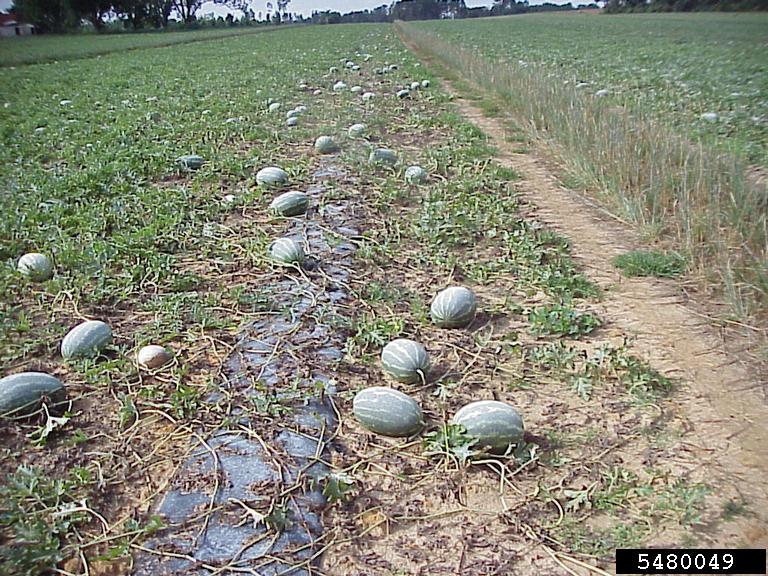
Fig. 3. Dieback in a melon field due to Fusarium wilt. Image courtesy of Ray D. Martyn, University of Georgia.
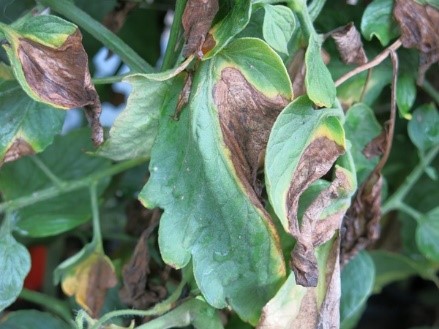 Fig. 4. V-shaped lesions starting on the margins of tomato foliage may be a symptom of Verticillium wilt. Image courtesy of Inga Meadows, North Carolina State University Extension.
Fig. 4. V-shaped lesions starting on the margins of tomato foliage may be a symptom of Verticillium wilt. Image courtesy of Inga Meadows, North Carolina State University Extension.
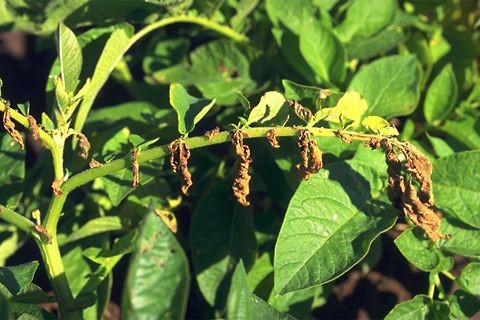 Fig. 5. Unilateral leaf necrosis and wilt caused by Verticillium sp. in a potato plant. Image courtesy of Ingrid Berlanger and Mary Powelson, Oregon State University.
Fig. 5. Unilateral leaf necrosis and wilt caused by Verticillium sp. in a potato plant. Image courtesy of Ingrid Berlanger and Mary Powelson, Oregon State University.
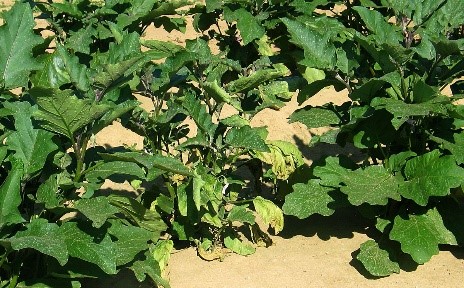
Fig. 6. Foliar symptoms of Verticillium wilt in an eggplant.
Disease Cycle
Fusarium oxysporum can occur in most soil types across Utah. It survives for multiple years in the soil or plant residue as mycelium or thick-walled resting spores called chlamydospores without a host plant. It may also be present in soil debris on greenhouse benches, irrigation pipes, mechanical equipment, and other field supplies.
Fusarium wilt is a disease of warm, wet conditions. In these circumstances, chlamydospores germinate and produce infection hyphae. These hyphae penetrate the root cortex or may enter through wounded or damaged roots. Hyphae then invade the xylem (vascular) tissue where the pathogen repeatedly sporulates and grows hyphae throughout the plant, essentially clogging the vascular system. If plant defenses are not able to prevent spread of the pathogen, the plant wilts and dies. Upon death of the plant, the fungus spreads and grows on the outer, decayed areas of the plant, forming masses of mycelium and subsequent chlamydospores for long-term survival.
Verticillium dahliae and V. albo-atrum have the potential to be found in most soil types across Utah. These fungi can survive several years in the soil as small hard balls of mycelium called microsclerotia.
The disease cycle of Verticillium wilt is very similar to Fusarium wilt. The ideal temperature for V. albo-atrum and V. dahliae infection is within 70 – 85 °F (21 - 30 °C). Under these temperatures with wet soils, microsclerotia germinate and the fungus infects plants through intact or damaged roots. From there, hyphae invade the xylem tissue and produce spores that are transported upward throughout the vascular tissue. Eventually the plant wilts and dies, and the fungus produces microsclerotia that are released into the soil when the plant matter decays. Both Fusarium and Verticillium wilt pathogens are introduced to new fields when chlamydospores or microsclerotia are moved via irrigation water, decayed plant material, soil particles, tools, etc. Verticillium can also be distributed in infected transplants, seeds, or tubers.
Diagnosis
To determine either wilt disease, remove a dying or newly-dead plant and roots from the soil. Use a knife and safely cut a cross-section of the stem near the base of the plant. Look for brown discoloration of the vascular tissue (Figs. 7-9). This method cannot distinguish between Fusarium and Verticillium, but can narrow it down to a wilt disease. An official diagnosis should be made by a plant pathologist.
Suspect samples can be submitted to the Utah Plant Pest Diagnostic Laboratory.
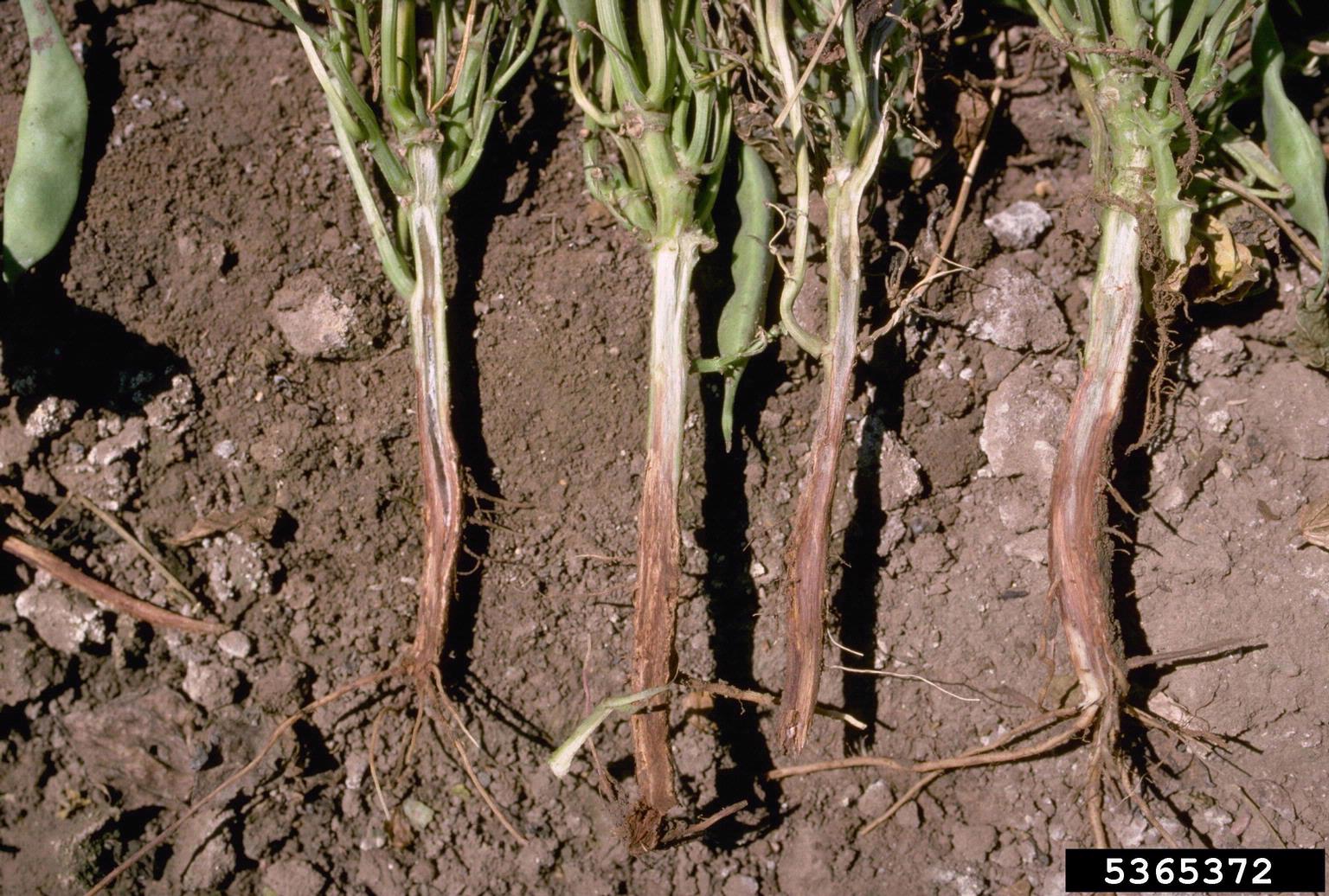
Fig. 7. Fusarium oxysporum f. sp. phaseoli causing vascular discoloration in a bean plant. Image courtesy of Howard F. Schwartz, Colorado State University, Bugwood.org.
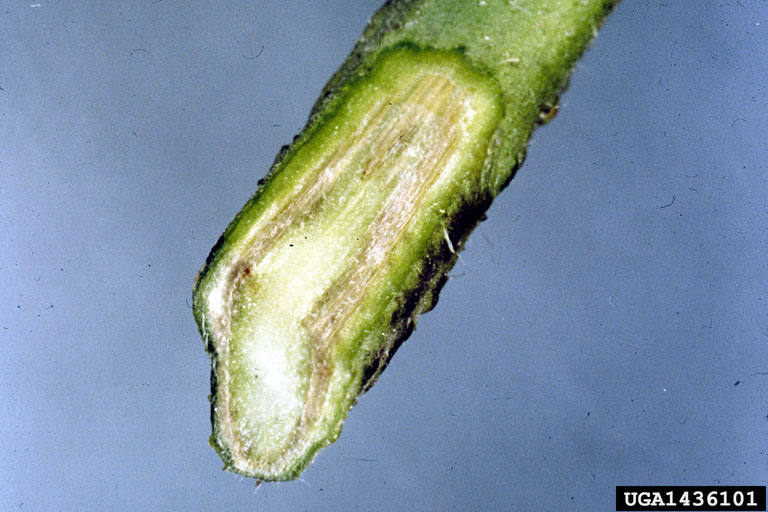 Fig. 8. Subtle vascular discoloration caused by Fusarium oxysporum f. sp. lycopersici in a tomato plant. Image courtesy of Clemson University - USDA Cooperative Extension Slide Series,
Fig. 8. Subtle vascular discoloration caused by Fusarium oxysporum f. sp. lycopersici in a tomato plant. Image courtesy of Clemson University - USDA Cooperative Extension Slide Series,
Bugwood.org.
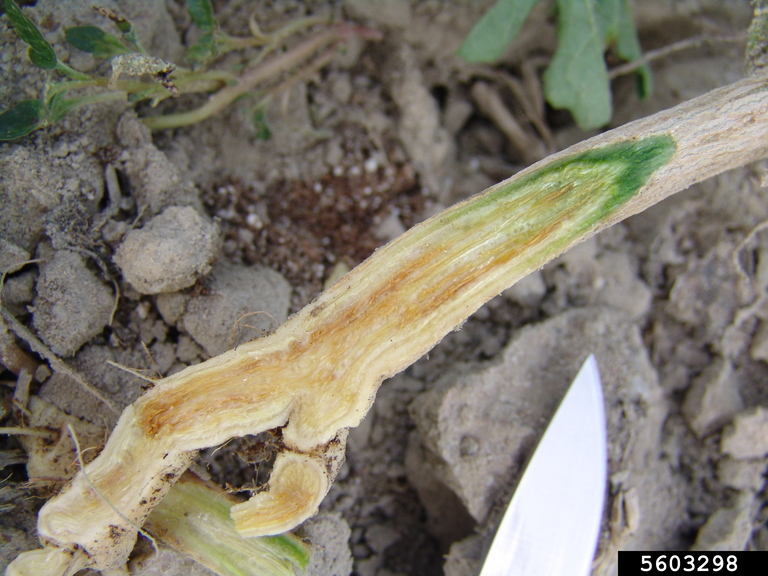 Fig. 9. Vascular discoloration caused by Fusarium oxysporum f. sp. niveum in a watermelon plant. Image courtesy of Gerald Holmes, Strawberry Center, Cal Poly San Luis Obispo,
Fig. 9. Vascular discoloration caused by Fusarium oxysporum f. sp. niveum in a watermelon plant. Image courtesy of Gerald Holmes, Strawberry Center, Cal Poly San Luis Obispo,
Bugwood.org.
Management
Since infected plants cannot be treated (and should be removed), it is important to use cultural control practices to prevent introduction of the disease and improve soil health.
Preventing introduction:
- Rotate between different crops to prevent wilt fungi from building up in the soil.
- Source disease-free seed. Though uncommon, uncertified disease-free seeds and tubers may harbor Verticillium spp. or Fusarium spp.
- Maintain cleanliness. When starting seeds and caring for transplants in a greenhouse, sanitation is critical in preventing pathogens like Fusarium and Verticillium spp. that may eventually get transferred to the field. Sterilize pots and trays by soaking them in a 10–15% bleach solution for half an hour to an hour or use quaternary ammonium compounds. Pots and trays need to be rinsed well with water afterwards to avoid phytotoxicity from residue. Disinfect greenhouse benches and other supplies. If infections do occur, seedlings should be disposed of along with the potting mix as it may be harboring the pathogens.
- After working in fields, ensure workers clean off soil from their shoes, tools, and mechanical equipment, when moving from one field to another.
Where the disease has been diagnosed:
- Plant cultivars of vegetables with resistance to Fusarium and Verticillium wilts. Cantaloupes, peas, and tomatoes have a wide selection of resistant varieties whereas other crops have limitations (Table 3). Note that some cultivars will only have resistance to one of multiple races of the pathogen, and this will be noted on the seed packets.
- Remove and dispose of all plant residues at the season’s end to reduce the population of overwintering fungal structures.
- Soil solarization could be an option if soil can be heated at significant depths (Fig. 10). (Review the Soil Solarization for Gardens & Landscapes literature from the University of California for specific instructions.)
- In commercial production, soil fumigation using high concentrations of the fumigants metam sodium, and chloropicrin can reduce microsclerotia populations in the soil. However, this treatment can be hazardous to overall soil health. This method is also not economically viable for Utah farmers.
- Cover crops in the mustard family have been shown to have some biofumigation properties due to their high presence of glucosinolates (Fig. 11). Research on biofumigation is ongoing. (Review the Managing Mustard Cover Crops for Biofumigation literature and video from Michigan State University for further information.)
- Homeowners and commercial producers can grow grafted plants that have greater resistance. Grafting combines a wilt-resistant rootstock with a scion that is chosen for the desired qualities of the fruit (Fig. 12). Estamino and Maxifort tomato varieties are commonly used for rootstocks due to their known resistance.
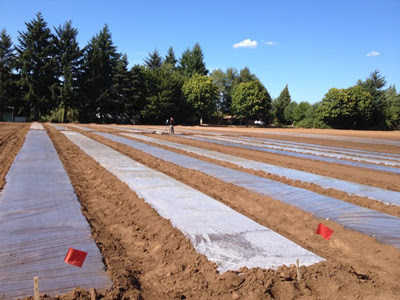 Fig. 10. Fallow field with polyethylene tarp being used for soil solarization to manage soilborne fungi. Image courtesy of Jennifer Parke, Oregon State University.
Fig. 10. Fallow field with polyethylene tarp being used for soil solarization to manage soilborne fungi. Image courtesy of Jennifer Parke, Oregon State University.
 Fig. 11. Mustard cover crops being incorporated into soil for biofumigation Image courtesy of Cornell University, College of Agriculture & Life Sciences.
Fig. 11. Mustard cover crops being incorporated into soil for biofumigation Image courtesy of Cornell University, College of Agriculture & Life Sciences.
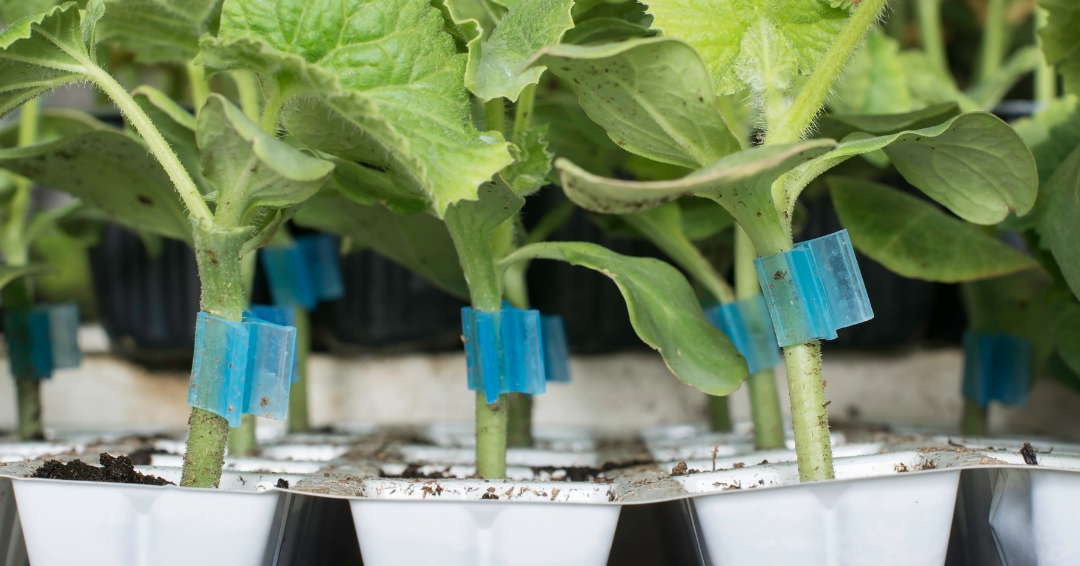
Fig. 12. Splice-grafted watermelons for resistance against Verticillium wilt.
Table 2. Examples of Vegetable Varieties Resistant to Fusarium Wilt and Verticillium Wilt*
| Crop | Variety |
|---|---|
| Cantaloupe | CharentaisF3, GriseletF3, Sarah’s ChoiceF3, Sugar CubeF3, Hannah’s ChoiceF2, AthenaF3, HalonaF3, DivergentF3, EscorialF2, MilanF3, Tasty BitesF3 |
| Watermelon | SorbetF1 |
| Other melon | SavorF3, Snow LeopardF1, LambkinF2, SapomielF3 |
| Pea | Oregon GiantF1, AvalancheF1, PLS 595F2, PremiumF1, StrikeF1, PenelopeF2, BistroF2, PLS 141F1, FeistyF1, Petite Snap GreensF1 |
| Tomato | GranaderoF2, V, GinFixV, MarnouarF1, V, Sun GoldF1, Supersweet 100F1, V, SakuraF2, New GirlF2, V, BigdenaF2, V, CelebrityF1, V, Grand MarshallF2, V, GalahadF3, V, Cherry BombF3, EdoxF2, BHN 968F1, V, Defiant PhRF2, V, BHN 589F2, V, CitrineF2, PozzanoF2, V, Plum RegalF2, V, BHN 871F2, V, Mountain MagicF3, V, Sunrise SauceF1, V, FavoritaF2, BeorangeF2, V, CauralinaF, VeronaF1, V, BHN 1021F2, V, Pink WonderF2, V, Oregon SpringV, Mountain FreshF2, V, GeronimoF2, V, SkywayF3, V, AperoF1, FrederikF2, ToronjinaF2, RebelskiF2, V, MarbonneF1, KakaoF1, DamselV, Mountain MeritF3, V, MarneroF1, V, Tomimaru MuchooF2, EstaminoF3, V, SantorangeF2, V, MaxifortF2, V, MarvoriF1, V, MargoldV, EstivaF2, V, DRO141TXF2, V, ClementineF1, V, Big BeefF2, V, TirenF1, V, NovaF1, Golden SweetF1, Valley GirlF2, BolsenoF2, V, VeronaF1, V, PolbigF1, V, ChiquitaF1, ParesoF2, V |
| Potato | AbnakiV, Century RussetV, DesireeV, ElbaV, GemchipV, Ranger RussetV, ReddaleV, RideauV, RussetteV, TargheeV |
F1 – Fusarium Wilt (Race 1); F2 – Fusarium Wilt (Races 1 & 2); F3 – Fusarium Wilt (Races 1, 2, & 3); V – Verticillium Wilt
*This table does not represent an all-inclusive list of resistant varieties. Varieties were selected from major seed suppliers.
References and Further Reading
- Berlanger, I. & Powelson, M. L. (2005). Verticillium wilt. The Plant Health Instructor. DOI: 10.1094/PHI-I-2000-0801-01
- Egel, D. S. & Martyn, R. D. (2013). Fusarium wilt of watermelon and other cucurbits. The Plant Health Instructor. DOI: 10.1094/PHI-I-2007-0122-01.
- Fusarium Wilt (Fusarium oxysporum). (2021). Koppert Biological Systems.
- Smedley, A. & Smith, A. (2011). Fusarium oxysporum. Michigan State University and Microbe Wiki.
- Verticillium wilt. (Verticillium dahliae, Verticillium albo-atrum). (2021). Koppert Biological Systems.
Image Credits
1 Courtesy of Magnus Gammelgaard
2 Scott Enebak, University of Auburn
3 Ray D. Martyn, University of Georgia
4 Inga Meadows, North Carolina State University Extension
5 Ingrid Berlanger and Mary Powelson, Oregon State University
6 Claudia Nischwitz, Utah State University Extension
7 Howard F. Schwartz, Colorado State University, Bugwood.org
8 Clemson University - USDA Cooperative Extension Slide Series, Bugwood.org
9 Gerald Holmes, Strawberry Center, Cal Poly San Luis Obispo, Bugwood.org
10 Jennifer Parke, Oregon State University
11 Cornell University, College of Agriculture & Life Sciences
12 Utah State University Extension, Canva subscription
Related Research


